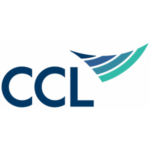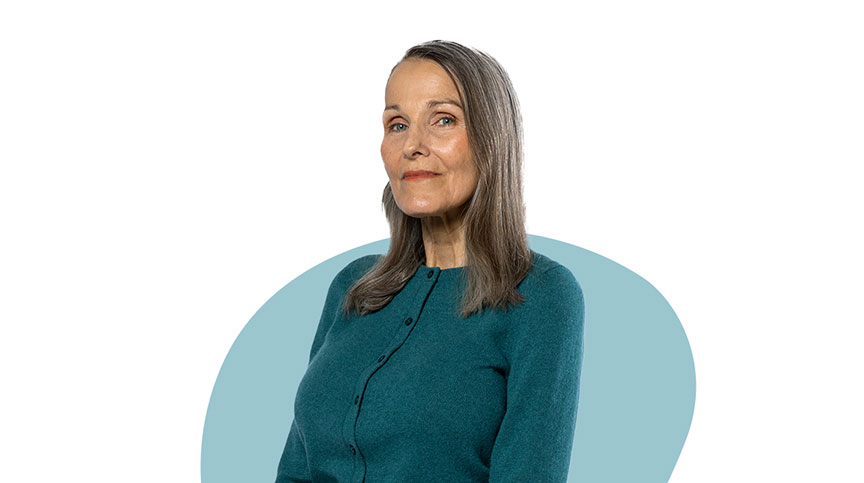It takes an impressive track record to make it to the executive suite.
You’ve most likely risen through the ranks by operating at the top of your game — producing stellar results and proactively tackling even the most complex challenges. But what does it take to succeed once you’ve actually made it to the top? What do you do when the broader organization is now looking to you for direction and guidance?
Individual performance simply isn’t enough at the senior executive level. To perform effectively requires perspectives, leadership skills, and spheres of influence that can vary dramatically from those you used to reach the executive suite in the first place.
In our work with many thousands of senior executives around the globe, we’ve found that those who produce the greatest sustained impact on their organization excel in 5 key areas:
- Building an effective executive team
- Developing resilience
- Promoting collaboration
- Expanding personal influence
- Encouraging feedback and engagement
Building an Effective Executive Team
Getting the best out of your senior leadership team is challenging. It takes a savvy executive team to tackle the “tough stuff” organizations face — from a market downturns or failed business strategies to untapped opportunities for growth. Senior executives need to be able to work together in lockstep to determine the best strategy, communicate their plan, and align the organization behind a path forward.
Many senior teams, though, simply don’t know how to work together effectively. Structural issues in particular can be a significant barrier. Since each team member typically represents a particular function or region, there can be a lack of clarity about when they think about the organization and when they need to rally behind a broader, enterprise-wide perspective.
Ego can also be an issue. If you’ve made it to the top, you are likely accustomed to being a star in your own right — and so are other members of your senior team. How do you take individuals with a high level of skill, proficiency, and ego and turn them into a cohesive unit?
It’s the same challenge faced by Olympic basketball coaches. They recruit the best pros they can find — each a high-profile personality — and must convince them to leave their egos at the door. It is a big challenge, but magic can happen on the court — and in the board room — when high-performing individuals become a high-performing team.
TIP: Identify your team’s shared purpose.
Does your executive team lack a sense of shared purpose? That was the case at a global pharmaceutical company. The executive team found itself struggling to decide whether it should even exist. Some thought each of the company’s business groups should simply operate autonomously, without an overarching corporate strategy.
With the support of executive leadership coaches, the team found its footing and its purpose. Senior leaders began to think beyond their previous business and functional silos — collaborating to transform the company’s operations globally.
Today, the team is proactively pursuing strategies that are making the company more agile and better able to respond to an increasingly uncertain and complex marketplace. Concerns about business group autonomy have been set aside in favor of shared strategic initiatives that are moving the broader company forward.
Developing Resilience
Few senior executives consider personal health and fitness to be part of their already demanding job description. Actually, the reverse is true. Regular exercise, healthy eating, and a good night’s sleep frequently come last — sacrificed at the altar of the job.
When personal health and fitness take a back seat, though, the impact may be far broader than you think. If you suffer from an illness, look physically unfit, or lack the energy and stamina to meet the demands of your work, it can impact how you are perceived by your team. Depending on your job role, it can even create uncertainty among business partners and shareholders.
Good health and leadership are more closely linked than you might think. A few proof points: Research conducted by CCL shows that leaders who exercise are consistently rated as more effective than those who don’t. Waist circumference is also a factor. Studies show leaders with abdominal obesity are more likely to be negatively rated by superiors, peers, and direct reports.
But how do you find the time to focus on your personal health and fitness? The threshold may not be as high as you think. Experts say even 15 minutes of intense exercise 3 times a week can make a difference. So can getting up and moving more during the day. Taking the stairs and making other small, incremental changes can help you stay active. When coupled with healthy eating, you can increase your energy level, shore up your immune system, reduce the risk of disease, and sleep more soundly. You will have the resilience you need to lead over the long haul.
TIP: Consider holistic lifestyle changes to increase resilience.
One executive recently shared with CCL how working at the senior level had amplified his stress level. He was traveling more, suffering from frequent jet lag, and struggling under the demands of his new role. He decided to make holistic lifestyle changes to improve his personal resilience — and he says it has made all the difference.
He began to eat more healthfully and adopted a rigorous exercise program. He also began to notice the symptoms he experienced when he veered off course, including spikes in irritability. He used that awareness to keep him focused on making smart choices day in and day out.
The impact of the changes? He reports greater energy levels, better composure, and better clarity of thought. He is sleeping more soundly and is better able to handle stress. “My personal effectiveness has definitely increased,” he says.
Promoting Collaboration
Organizations today are often structurally complex, with multiple business entities and functional support teams in key markets around the globe. Employees must navigate through a tangle of direct and indirect reporting relationships that connect them to their team, their customers, and the broader organization.
Supervisors in the middle of these structurally complex organizations face one overriding obstacle: getting things done when everyone doesn’t report to you. How can you cross organizational boundaries and pull together teams with the right skills and the right knowledge if others think “it’s not my problem”?
As a senior executive, you are in the position to lead by example — demonstrating how to work collaboratively to knock down barriers. And if you don’t, the organization may fail to respond effectively to important challenges and opportunities. Unfortunately, working collaboratively is something that doesn’t come naturally to many senior leaders. Think about your own experience. You likely have been rewarded and promoted based on your individual achievements, including your command of your functional responsibilities and your speed at producing results. But collaboration involves the opposite skillset.
Individuals who are skilled at spanning boundaries and collaborating routinely slow down and take a clear-eyed look at the organizational landscape. They are able to spot important connections, understand the perspectives of others and determine which relationships they can leverage to get things done.
TIP: Establish a culture of collaboration.
Executives who successfully model collaborative behavior often are great storytellers. They look across the organization for examples of collaboration successes and then share them broadly — describing the challenge, the barriers faced, and how those barriers were set aside in favor of the greater good.
Even if storytelling doesn’t come to you naturally, with practice it can become second nature. That was the experience of a CEO who began to work intensively on promoting a collaborative culture within his organization. He told CCL that the more he focused on collaborative successes, the more it changed his perspective.
Promoting a collaborative culture through illustrative examples is great, but ensuring your team is leading by example is what makes those stories even more authentic and impactful emblems of success. Therefore, executives should also ensure that their executive team is intentionally striving to work collaboratively toward their shared goals.
Expanding Personal Influence
While building influence is important at all levels in an organization, it is particularly critical at the top. As a senior executive, you are entrusted to set direction and to act as the proverbial North Star for your organization. But will folks come along for the ride and support the strategies you map out?
Great executives are intentional about their leadership image and use personal influence to build consensus around their plans, inspire commitment, and empower their team to succeed. They know what motivates other people and how to get folks to follow what they are saying and doing. They bring together individuals with differing viewpoints and are able to align them as they work toward a shared goal.
They also know that developing influence isn’t a one-way street — a matter of outlining your vision and expecting others to blindly support it. Influential leaders understand the importance of dialogue, and they spend time listening, not just talking. As a result, others feel validated and valued, and are more likely to join in.
Credibility is also an important factor. Each of us assesses leaders based on their track record, what we know about them, and whether they have historically delivered what they’ve promised. We ask: Can I depend on you? Will you do you what you say you will do? Focusing on an alignment between your actions and your words is fundamental to broadening your personal influence.
TIP: Find your seat at the table.
An HR vice president for a major corporation described to CCL how changing her personal perspective helped her to build and extend her influence. She had always thought of herself as a functional resource supporting the company’s executive team. She attended their meetings as an invited guest to bring an HR point of view to their deliberations.
She came to realize, though, that in order to have a real seat at the table and to influence outcomes, she needed to become more authentic. She needed to show up as herself, not as her HR role, and to share her broader thoughts and perspectives. She also needed to act like a true member of the team, not as an invited guest.
After making changes that broadened her influence, she was promoted to chief human resources officer — a role that reflected her new perspective and the valuable contributions she was making.
Encouraging Feedback and Engagement
Giving and receiving feedback is one of the key skills leaders at all levels need to master, and it becomes even more important — and scarce — as you move up the ladder.
Teams that are really good at both giving and receiving feedback tend to have a high level of trust, candor, and sharing. Modeling effective feedback practices yourself can create those safe conditions and make it more likely for feedback to happen up and down the organization. Getting feedback can give you crucial information about what’s working, and how you might become more effective. But unless encouraged to do so, few individuals will feel confident enough to provide feedback to a senior executive. Giving feedback effectively can help you keep your team engaged. People need to feel they are seen, valued, and are making a difference. Providing feedback shows you are actually noticing their contributions.
Too often we give feedback only on extremes in performance — the huge successes or the dramatic failures. To be effective, feedback needs to be a more routine part of daily interactions. Each of us constantly scans our environment and makes assessments. We simply need to be overt, intentional, and articulate at sharing what we observe as we move throughout our day. Remember, people are more sensitive to criticism than praise, so give more positive feedback than negative. It’s easier to incorporate feedback when we are noticed more for our positive contributions, versus our shortcomings. Try to catch others doing things well and let them know their hard work is appreciated.
TIP: Deliver effective feedback that really works.
Learning how to deliver effective feedback transformed the work of an audit team led by a senior executive with a large global law firm. One managing partner told CCL that teams dreaded the audits and were traumatized by detailed reports cataloguing the mistakes they were making.
When the audit executive adopted a new approach to feedback, the experience was transformed. Positive findings became an important part of the discussion and were featured in each audit report. Looking at the positive results as well as the negative had a huge, curative impact. The team was better able to hear and respond to things they needed to work on after receiving positive affirmation for things they were doing well.
It’s Different at the Top
Do you have the skills to produce a sustained impact on your organization? Leading an organization can be a powerful and humbling experience. As a senior leader, you play an enormous role in the success of your organization, and you need to excel in these 5 ways.
Our team of leadership experts offers a variety of development opportunities tailored especially for leaders like you who are working at the senior-most levels of an organization — whether you’ve just arrived or have been there for some time. We can help you broaden your impact and produce results that truly matter to you and your organization.
Ready to Take the Next Step?
Build the senior leadership skills needed to succeed at the highest levels of your organization. Learn more about Leadership at the Peak, our premier leadership development program for senior executives.









